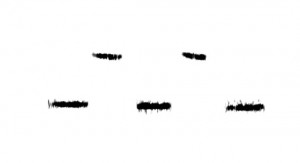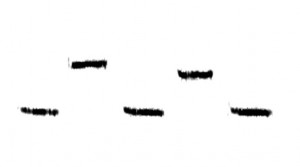Inspired by Monday’s post about Margaret Morse Nice I looked up recordings of Song Sparrows in our collection. I found more than 1,600 recordings from 27 states in the USA and Canada. I was hoping to find recordings from Margaret Morse Nice’s former study area in her backyard, now Tuttle park, just north of the Lane Avenue bridge along the east side of the Olentangy river.
Instead I located a cluster of recordings in Franklin County: Don Borror, founder of our lab, recorded Song Sparrows on the OSU main campus in 1948 and 1953. [Note that these are among the earliest preserved sound recordings – the earliest existing recording in the USA is of a Song Sparrow recorded by Cornell Lab founder and pioneer in sound recording Arthur Allen in 1929.]
When we describe variation within and differences among songs, in addition to listening to recordings we often visualize sounds. We use sound analysis software to produce spectrograms that show the frequency of sound vibrations, which we perceive as pitch, over time. The darkness of the spectrogram indicates the loudness of the sound. See for yourself in this short video of one song of a Song Sparrow played in the software RAVEN, follow the moving bar while you listen – can you hear the difference among the notes?
Now listen to the variety of songs that Don Borror recorded on OSU campus and try to match them with the corresponding sonograms. Tip: Hover your mouse over each of the spectrograms to reveal the number corresponding to the sound files below. This will help you to verify your match.
If you have enjoyed this sound matching game, I can recommend playing “Bird Song Hero“, a matching game set up by the Cornell Lab of Ornithology. You will not only perfect your skills in matching spectrograms to heard sound but will also learn the songs of some common garden birds. Enjoy!
About the Author: Angelika Nelson is the curator of the Borror Laboratory of Bioacoustics. Her recent research has focused on song and behavioral ecology of the White-crowned Sparrow in Oregon; each spring Angelika teaches the OSU course “Ohio Birds” where students learn about the life of birds and how to identify them in the field – by sight and sound.


















